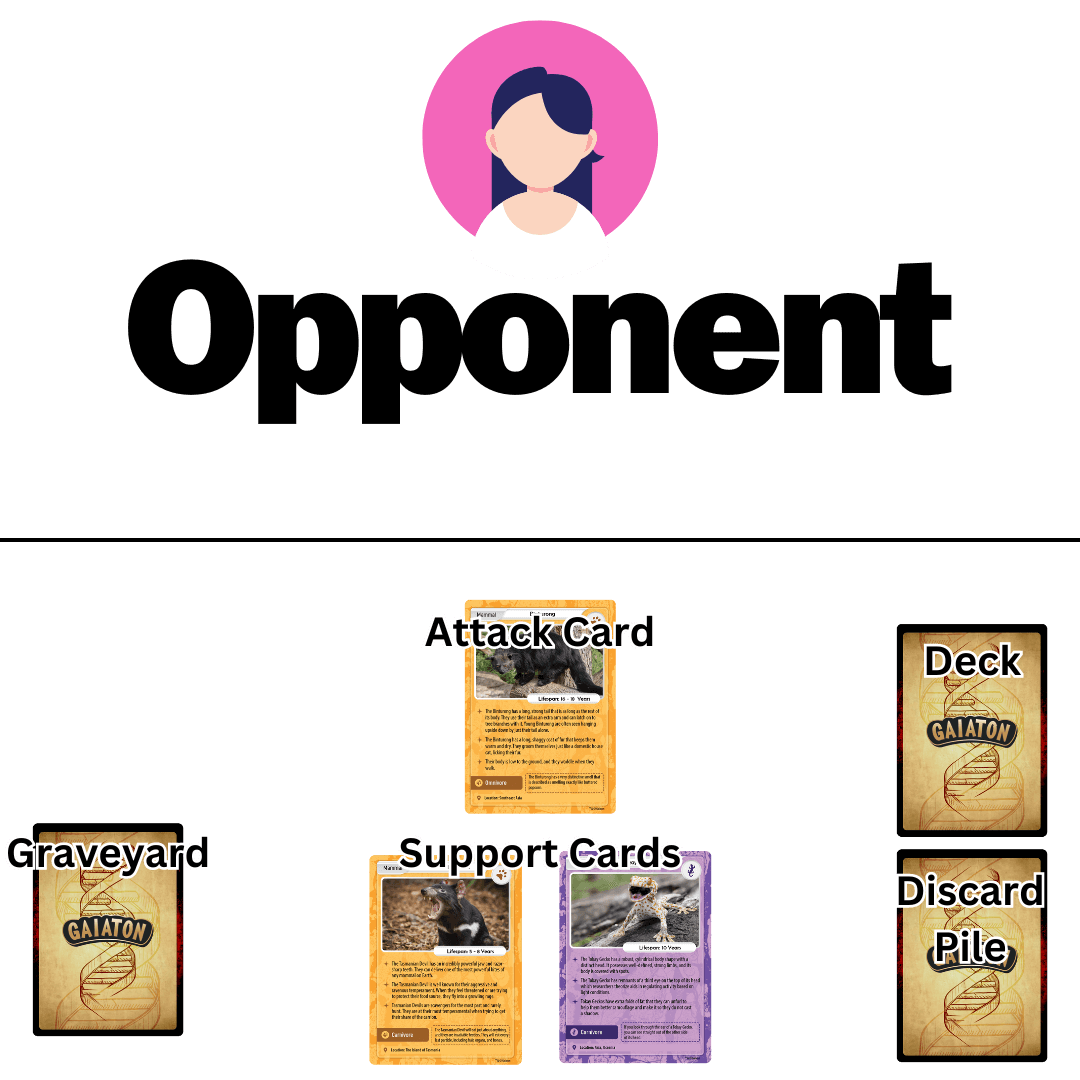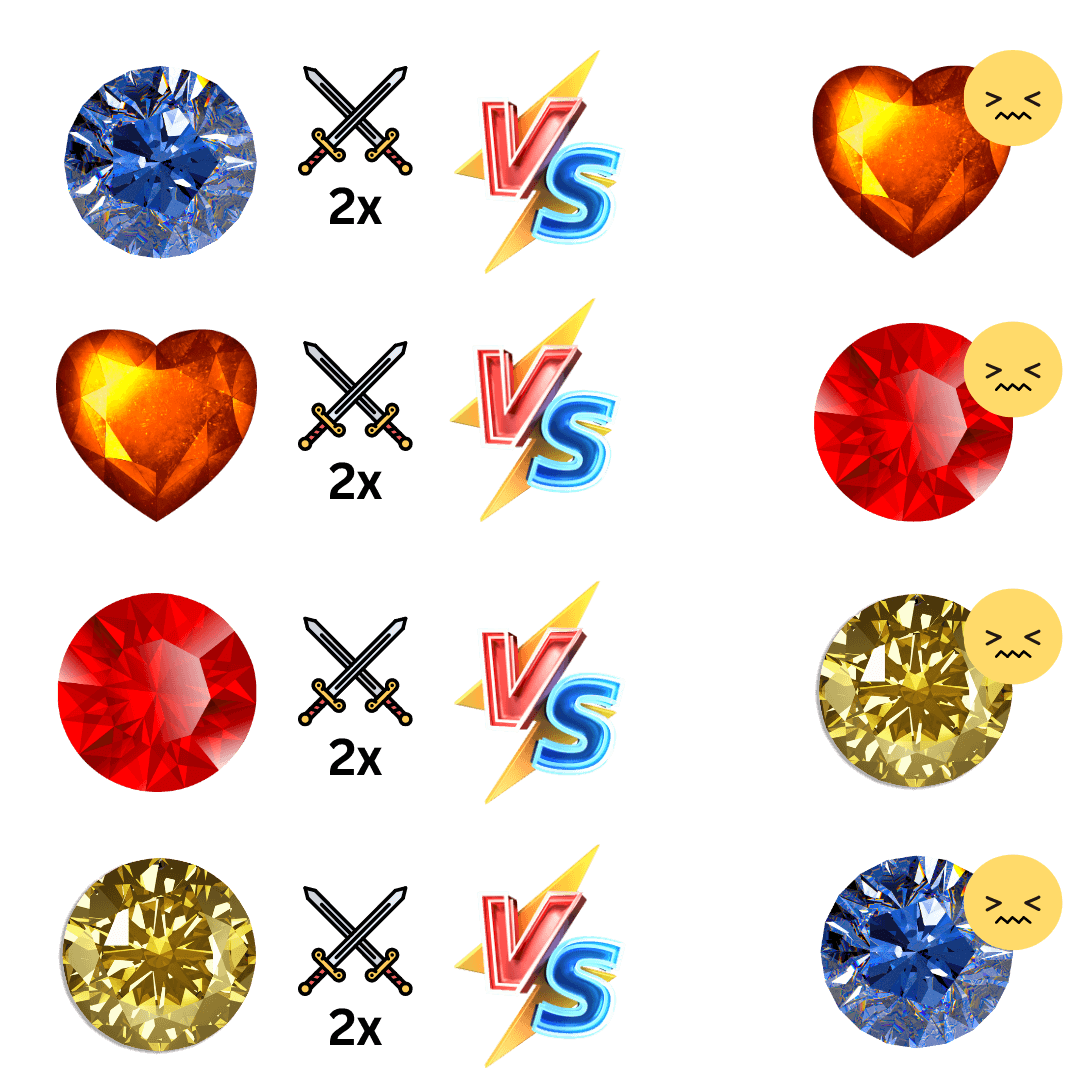
Lifeforce Battle
Gaiaton Lifeforce Battle is an incredibly fun Deck Building game with exciting variables! Fine tune your strategy and have a blast with your friends. The possibilities are endless with the ability to craft your deck any way you see fit!
Become the ultimate Deckmaster and build your 50 card Gaiaton battle deck to play with friends. This one on one game has huge replay value and is easy for anyone to learn.
How To Play
Step 1. Build Your Deck
In Gaiaton Lifeforce Battle, each player enters the fray with their own deck of animal cards. Here are the deck building rules:
Your deck must have exactly 50 cards.
Your deck must have at least 5 or more of each color type.
Your deck cannot contain multiple copies of any card.
Your deck cannot have more than 10 Green cards.
Your deck cannot have more than 10 Purple cards.
Experiment with building your deck and creating multiple decks for different types of games. You’ll want to try different combinations of animals and lifespans to find out which type of deck works best for your play style — and can hold its own against your opponents’ decks. A good deckmaster keeps things fresh with exciting decks full of surprises, twists, and turns.
Step 2. Shuffle the Decks and Choose First Attacker
Before the game begins, each player shuffles their opponent’s deck.
Each player draws 5 cards off the top of their own deck. Do not let your opponent see the cards in your hand. If you do not like your starting hand, you may pick a new hand of 5 cards. Your opponent must reshuffle the discarded cards back into your deck if you do this. You may exchange your starting hand only once.
Afterward, the players do rock, paper, scissors (or another selection method of your choosing, such as seeing who rolls higher using a 6-sided dice or flipping a coin). The winner chooses which player will go first in the game. The first player will have the first chance to attack.
Step 3. Prepare the Battle Stage
The space on the table between players is considered the battle stage. Each player’s half of the stage consists of 5 areas: their attack or counterattack card, their support cards, their deck, their discard pile, and their graveyard.

Step 4. Conduct the Battle
The first player is the first attacker. To play an attack card, you must also play support cards. Any number and any type of animal can serve as support cards, as long as their combined lifespans equal or exceed the lifespan of your attacking animal card.
If an animal card has a lifespan range rather than a single number, you can choose which of the 2 numbers in the range you want to use as the animal’s lifespan. To use the lower number, say “low” when you play the card. To use the higher number, say “max” or “max attack.”
You need to use enough support cards to equal or exceed the lifespan of the animal you wish to attack with. (So, for an animal with a lifespan range, you might strategically choose the lower number because you want to risk fewer support cards in the battle, even though it results in a lower attack. Or you might choose the higher number to have a more powerful attack, even though it means you need to provide more support.)
Once you’ve decided on your attacking animal and its support, place your attacking animal card toward the front of your play area, in the center of the battle stage. Place the support cards in a row below it.
The non-attacking player must now make a counterattack. You can make a counterattack in the same way as an attack, by choosing an animal to counter the attack and then playing support cards that equal or exceed its lifespan. If a countering animal has a lifespan range, the same “low” and “max” rules apply as with an attacking animal.
Place the counterattacking animal card directly across from the attacking animal on the battle stage, with the support cards in a row below it.
If the countering player does not have a card in their hand that can beat the attacker, or if they strategically choose not to defeat the attacker this round, they may play whichever animal card they wish as a counterattack but still need to play the appropriate support cards.
When both the attacking and countering animal cards have entered the battle stage, players should compare their lifespans, keeping in mind whether the animal was played with a low or max lifespan. The animal with the higher lifespan wins the duel.
The loser of the battle puts their attacking or countering animal card, as well as the associated support cards, into their graveyard pile. Graveyard cards are out of play and cannot be used again in that game.
The winner of the battle puts their attacking or countering animal card, as well as the associated support cards, into their discard pile to cool down. This pile cannot be touched until their deck runs out of cards. Before the discard pile is used again, the player’s opponent must shuffle it.
Both players must draw enough cards from the top of their deck to reach 5 cards in their hand again. Players should always draw to reach 5 cards in their hand before beginning a new battle. This includes prior to each battle within a stalemate battle.
The winner of the battle chooses who goes first in the next round. If the winner wants to go first they say “I call”. If they want their opponent to go next they tap the table twice with their fingers and say “check” or “I check” and the other player must attack first.
Then, the next battle round begins and is played in the same way as the previous round, with players choosing attacking and countering animals as well as their support. The gameplay continues until a player loses all their cards to their graveyard, a player cannot support any additional attacks, or a player forfeits the game.
Battle variables:
Certain colored animals are “strong” against other animals. This doubles their attack or counterattack in the battle.
These strengths are based on the color of the attacking or countering animal card only.
Support cards for the attack do not need to match in color nor do they need to add up to or exceed the doubled lifespan of the strong animal. Support cards need to equal the attacking or countering animal’s original lifespan only, as described in the section above. This means you can do twice the damage with half the amount of support cards.
The strengths are:
Blue is strong against Orange.
Orange is strong against Red.
Red is strong against Yellow.
Yellow is strong against Blue.

Example 1
The attacking player plays a Red (bird) card that has a lifespan of 20 years. They play support cards of any color whose lifespans add up to or exceed 20 years.
The counterattacking player plays an Orange (invertebrate) card with a lifespan of 11 years. They play support cards of any color whose lifespans add up to or exceed 11 years.
Yet because Orange is strong against Red, the counterattacking animal’s strength is doubled and now equals 22. So, they win the battle because their “strong” counterattack of 22 is greater than the attacking animal’s strength of 20.
Example 2
The attacking player plays a Red (bird) card that has a lifespan of 7 years. They play support cards of any color whose lifespans add up to or exceed 7 years.
The counterattacking player plays a Yellow (mammal) card with a lifespan of 20 years. They play support cards of any color whose lifespans add up to or exceed 20 years.
The counterattacking player has chosen a countering animal card with such a high lifespan because they know that Red is strong against Yellow, meaning that the Red animal’s attack will double to 14 once they play their Yellow animal.
So, their counterattacking animal needs 14 or more lifespan to win the battle. In this case, the counterattacking animal wins because it has 20 strength, and 20 is higher than 14.
Other variables:
Purple and Green cards always create a stalemate against each other, regardless of the lifespan of the animals. This is because reptiles and amphibians cannot battle each other on their own.
This type of stalemate occurs when the following card types are played:
Purple vs. Green
Purple vs. Purple
Green vs. Green
Stalemate details
There are 2 ways a stalemate can occur:
- Lifespans of cards placed into battle are equal.
- Purples and Green animal cards are placed into battle against each other.
When a stalemate occurs, all cards are left on the battle stage, and each player draws from their deck until they have 5 cards in their hand. The player who began the current battle places a second attacking animal card and associated support cards on the battle stage, then their opponent does the same with a counterattacking animal.
The player with the highest total lifespan (i.e., both attacking animals or both counterattacking animals) wins. The losing player must put all cards used in the duel in their graveyard, while the winner puts all used cards in their discard pile to cool down.
A stalemate can continue again and again, as many times as it takes to end the battle. You might choose to initiate a stalemate several times to force your opponent to lose many animal cards if you’re confident your animals will have the higher total lifespan at the end. You may also just enjoy the surprise and anticipation of a stalemate battle!
Step 5. Ending the game
The object of the game is to defeat all the cards in your opponent’s deck or get your opponent to forfeit the game.
If a player runs out of cards or cannot support any more attacks or counterattacks, they must forfeit the game.
If a player runs out of cards, they lose the game.
Can you outsmart your opponent and win the game?

